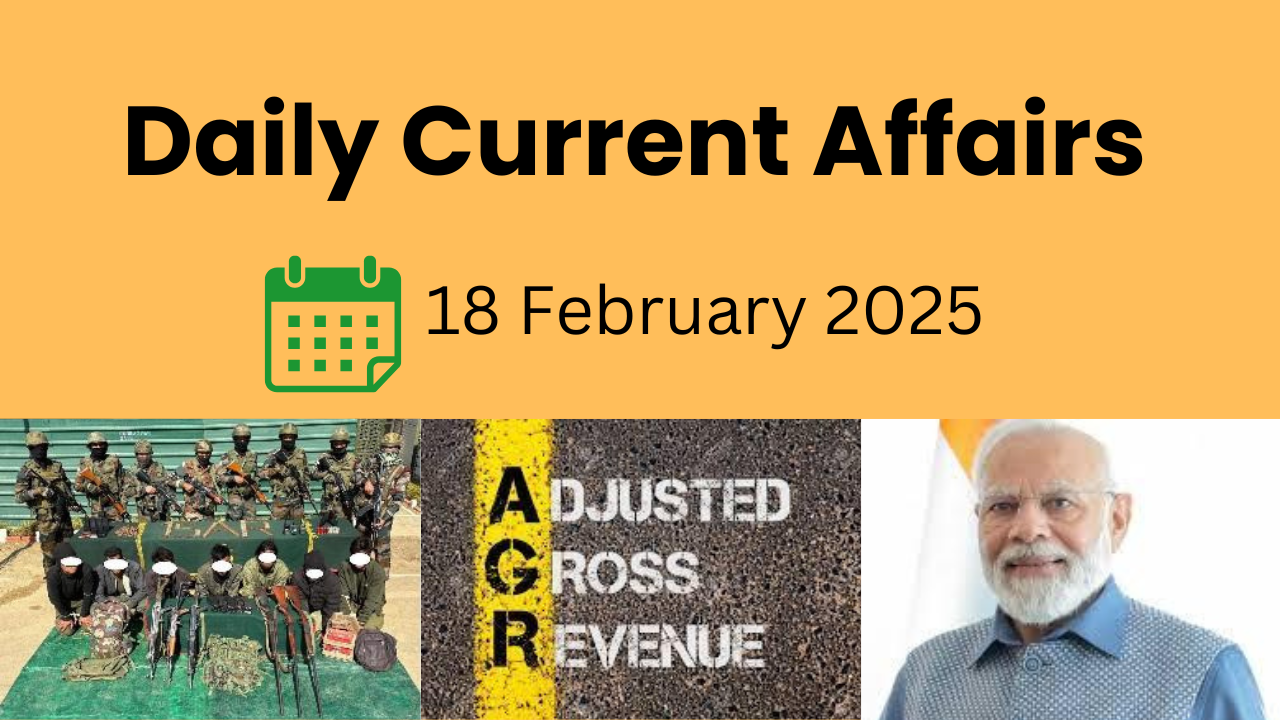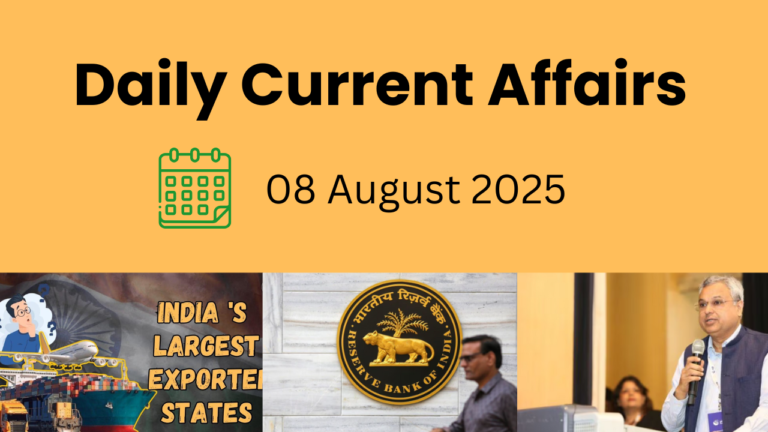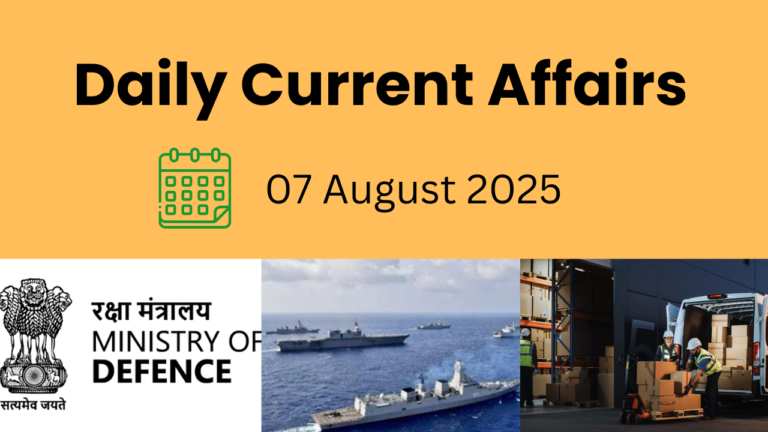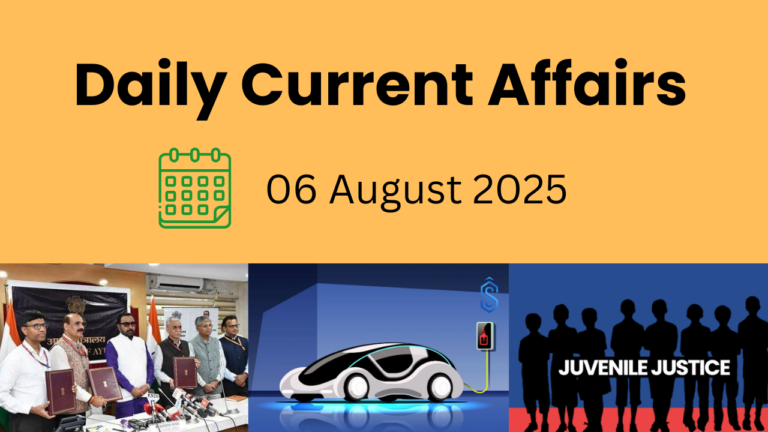1. India’s Sovereign Green Bonds: Challenges and the Road Ahead
Context: India has launched Sovereign Green Bonds (SGrBs) to finance its low-carbon transition, yet investor demand remains weak. Despite their potential to fund clean energy projects, these bonds have struggled to attract a significant greenium (lower borrowing costs typically associated with green bonds).
With limited investor participation, the government is filling financial gaps using general revenue. Addressing liquidity concerns, improving transparency in reporting, and exploring sustainability bonds could help strengthen India’s green finance ecosystem.
What Are Sovereign Green Bonds?
SGrBs are issued by governments to fund environmentally sustainable projects. India introduced a framework for these bonds in 2022 to promote:
- Energy efficiency
- Carbon emission reduction
- Climate resilience
- Ecosystem conservation
Funds Raised and Utilization:
Since 2022-23, India has issued SGrBs eight times, raising nearly ₹53,000 crore. A significant portion (50%) has been allocated to the manufacturing of energy-efficient electric locomotives under the Ministry of Railways.
Revised Allocations for 2024-25:
- Electric Locomotive Manufacturing – 12,600 crore
- Metro Projects – 8,000 crore
- Renewable Energy (including Green Hydrogen Mission) – 4,607 crore
- Afforestation (Green India Mission) – 124 crore
Why Is Investor Demand Weak?
Limited Greenium and High Borrowing Costs:
Globally, green bonds offer a greenium of 7-8 basis points, making them an attractive financing tool. However, in India, the greenium remains just 2-3 basis points, making SGrBs less appealing to investors.
Liquidity Constraints:
- Smaller issuance sizes reduce market activity.
- Investors holding bonds until maturity limit secondary market trading.
- Low trading volumes discourage new buyers.
Lack of a Strong Impact Investment Ecosystem:
Unlike developed economies, India lacks dedicated social impact funds and responsible investing mandates, which are crucial for driving demand for green bonds.
Consequences of Weak Demand:
Funding Shortfalls for Green Initiatives:
The government’s difficulty in securing funds through SGrBs has increased its reliance on general revenue to finance key projects.
Revised Green Bond Funding Estimates (2024-25):
- Initial Requirement: 32,061 crore
- Revised Estimate (after higher yield demands): 25,298 crore
- Grid-Scale Solar Allocation Cut: Reduced from 10,000 crore to 1,300 crore
Bridging the Gap:
- Expected SGrB Proceeds: 21,697 crore
- Covered by General Revenue: 3,600 crore
These funding shortfalls threaten the sustainability of India’s green transition.
The Path Forward for India’s Green Bond Market:
Introducing Sustainability Bonds:
A World Bank report indicates that emerging markets issue more sustainability bonds—which finance both green and social projects—compared to developed economies that focus solely on green bonds.
Expanding the scope of SGrBs to include social projects could attract more investors and increase proceeds.
Enhancing Transparency and Reporting:
Delayed reporting on fund allocation and impact reduces investor confidence. Investors rely on these reports to:
- Assess fund utilization
- Refine their investment strategies
- Ensure accountability
India’s 2023-24 allocation report is still pending, affecting trust and transparency in the market. Timely and detailed reporting is essential to boost investor participation.
Leveraging Global Financial Partnerships:
India’s sovereign credit rating is not very high, which affects investor confidence in its green bonds. Partnering with multilateral development banks could:
- Strengthen credibility
- Attract international investors
- Expand green financing options
Conclusion:
India’s Sovereign Green Bonds have the potential to drive sustainable development, but weak demand is hampering their effectiveness. To unlock their full potential, India must:
- Explore sustainability bonds to widen investor appeal
- Enhance post-issuance reporting for better transparency
- Build partnerships with global financial institutions
By implementing these measures, India can strengthen its green finance framework and secure the funds needed for a sustainable, low-carbon future.
2. Manipur Crackdown: 11 Militants Arrested, Including Suspected KNA Cadres
Context: In a significant security operation over the past two days, security forces in Manipur have apprehended 11 militants, including seven suspected members of the Kuki National Army (KNA). Along with these arrests, a large cache of arms and ammunition has been seized.These suspected KNA cadres were arrested in Churachandpur district, a region that has been at the heart of recent ethnic conflicts.
Background of Manipur’s Ethnic Conflict:
Origins of the Violence:
The ethnic tensions in Manipur escalated in May 2023, leading to violent clashes between the Meitei community, which dominates the Imphal Valley, and the Kuki-Zo tribal groups, who reside in the surrounding hills.
The violence erupted following a Manipur High Court directive that asked the state government to act on a decade-old recommendation to grant Scheduled Tribe (ST) status to the Meitei community.
Casualties and Displacement:
- Over 250 people lost their lives in the violence.
- Thousands were displaced, with many seeking shelter in relief camps.
Imposition of President’s Rule:
Recently, in response to the deteriorating law and order situation, the central government imposed President’s Rule in Manipur.
- The State Assembly has been placed under suspended animation.
- This followed the resignation of Chief Minister N. Biren Singh.
Understanding the Kuki National Army (KNA):
The Kuki National Army (KNA) is an insurgent group primarily active in Manipur and represents the interests of the Kuki ethnic community.
Objectives of the KNA
- Demand for greater autonomy for the Kuki people.
- Protection of their ethnic and political rights.
- Recognition of the Kuki identity and territory.
The KNA has been involved in armed conflicts against both the Indian state and rival ethnic groups in the region.
Connection with the Kuki National Organization (KNO):
The KNA operates under the Kuki National Organization (KNO), an umbrella group comprising multiple Kuki insurgent factions advocating for a separate Kuki homeland.
The Suspension of Operations (SoO) Agreement
In 2008, the KNA became a signatory to the Suspension of Operations (SoO) pact, which was an agreement between:
- The United Peoples’ Front (UPF) and the Kuki National Organization (KNO) (representing 24 insurgent groups).
- The Union Home Ministry.
- The Government of Manipur.
This pact aimed to end hostilities in exchange for peace talks and limited autonomy. However, the Manipur government withdrew from the agreement in March 2023, reigniting tensions.
Who Are the Kuki People?
The Kuki community is an indigenous ethnic group spread across Northeast India, Bangladesh, and Myanmar.
Presence in India
- Found in all northeastern states except Arunachal Pradesh.
- Closely related to the Chin people of Myanmar and the Mizo people of Mizoram.
- Together, these groups form the larger Zo ethnic identity.
The Demand for a Separate Kukiland:
The demand for a separate “Kukiland” dates back to the late 1980s, when the Kuki National Organization (KNO) was established as the first and largest Kuki-Zomi insurgent group.
Territory of the Proposed Kukiland
In 2012, the Kuki State Demand Committee (KSDC) launched a movement for Kukiland, which seeks control over:
- Sadar Hills (surrounding the Imphal Valley).
- Churachandpur district (a Kuki stronghold).
- Chandel district (home to both Kukis and Nagas).
- Parts of Tamenglong and Ukhrul, which are primarily Naga-dominated regions.
Conclusion:
The arrest of suspected KNA militants and the seizure of weapons signal a toughened security stance in Manipur. However, the underlying ethnic tensions and demands for autonomy remain unresolved.
With President’s Rule in effect, the future of peace talks and insurgent activities will depend on how the central government and regional leaders navigate this complex crisis.
3. Changing Employment Landscape in India: Trends, Challenges, and Way Forward
Context: India’s employment patterns have witnessed a major transformation over the past few decades. The dominance of public sector jobs has gradually declined, making way for the private sector, particularly after the 1991 economic reforms.
The Shift from Public to Private Sector:
After Independence, India’s middle class was largely shaped by public sector employment. However, significant changes have occurred over the years:
- Public sector employment stood at 194.7 lakh, while the private sector accounted for 80.6 lakh jobs in 1995.
- By 2012, government and quasi-government jobs dropped to 176.1 lakh, whereas the private sector surged to 119.7 lakh.
Key Trends in Employment Shifts:
- Indian Railways: Regular employment declined from 16.5 lakh (1990-91) to 11.9 lakh (2022-23).
- IT Sector Growth: Companies like TCS and Infosys had 45,714 and 36,750 employees respectively in 2004-05. Within 15 years, these numbers skyrocketed to 4,48,464 and 2,42,371.
- Banking Sector Transformation:
- In 1991-92, 87% of employees in scheduled commercial banks worked in public sector banks (PSBs).
- By 2023-24, the private sector workforce (8.74 lakh) surpassed the PSBs’ workforce (7.5 lakh).
Why India’s Middle Class is Moving to the Private Sector:
- Economic Liberalization: The post-1991 reforms opened the economy, leading to private sector expansion and more job opportunities.
- Better Salaries & Benefits: Private firms often provide higher pay, rapid career growth, and attractive benefits compared to government jobs.
- Evolving Work Culture: A performance-driven and innovative work environment in private companies appeals to the ambitious workforce.
- Limited Government Jobs: Stagnation in public sector hiring and intense competition make private sector employment more accessible.
- Rise of Entrepreneurship: Startups and business ventures are creating new job avenues, encouraging self-employment over traditional jobs.
Challenges in India’s Employment Sector:
1. Slow Shift from Agriculture to Other Sectors
- India has struggled with structural transformation, where surplus labor in agriculture moves to manufacturing and services.
- According to Periodic Labour Force Surveys (PLFS):
- The farm sector’s workforce share declined from 64% (1993-94) to 42.5% (2018-19) but has risen again to 46.2% in 2023-24.
2. Rising Informal Employment:
- 85% of India’s workforce is informal, contributing over 50% of GDP.
- Most jobs in the services sector are low-paying and lack job security.
- A significant portion of socially and economically weaker sections is concentrated in informal work.
Why the Informal Sector is Expanding:
- Skill Gaps: The education system emphasizes theory over practical training, leaving graduates ill-equipped for industry needs.
- Rural-Urban Divide: Quality training programs and industry exposure remain inaccessible in remote areas.
- Technological Disruptions: The rise of gig economy platforms has led to more casual and contractual jobs.
- Preference for Flexibility: Many workers choose informal jobs for greater flexibility, despite lacking social security benefits like healthcare and pensions.
Challenges in the Informal Sector:
- Low Wages & Exploitation: Most informal jobs do not meet minimum wage standards or ensure safe working conditions.
- Lack of Social Security: Informal workers are excluded from pension schemes, healthcare, and unemployment benefits.
- Limited Access to Finance: Many informal businesses struggle to secure bank loans or credit facilities.
- Poor Quality of Life: Unorganized sector workers face higher poverty rates compared to formal sector employees.
The Way Forward: Strengthening India’s Workforce:
1. Enhancing Education & Skill Development:
- Align academic curricula with industry needs to equip students with practical skills.
- Promote vocational training and internships for hands-on learning.
2. Government-Led Initiatives for Employment Growth:
- Focus on emerging sectors like renewable energy, waste management, and precision agriculture.
- Promote public-private partnerships to ensure training programs align with market demands.
3. Strengthening Rural Skilling & Employment:
- Leverage digital technology to expand online education and vocational training in rural areas.
- Invest in local entrepreneurship programs to create self-employment opportunities.
4. Employee Retention & Well-being in the Private Sector:
- Upskilling programs should be customized to help employees adapt to technological advancements.
- Encourage inclusive work environments and provide mental health support to enhance job satisfaction.
Conclusion
India’s employment landscape is undergoing a massive transformation, shifting from government jobs to private sector dominance. While this change brings new opportunities, it also poses challenges like informal employment, skill gaps, and social security concerns.
4. India’s Engagement in the Indian Ocean: 8th Indian Ocean Conference
Context: The External Affairs Minister of India recently participated in the 8th Indian Ocean Conference, reinforcing India’s commitment to regional stability and cooperation.
About the Indian Ocean Conference:
- The Indian Ocean Conference (IOC) was initiated by the India Foundation in 2016 in Singapore, with representatives from 30 countries.
- Over the years, it has grown into a premier platform for discussions on regional security, economic cooperation, and maritime sustainability.
- The conference aligns with India’s vision of Security and Growth for All in the Region (SAGAR), focusing on strategic collaboration among Indian Ocean nations.
India’s Strategic Role in the Indian Ocean Region (IOR):
1. First Responder in Crisis Situations:
- India plays a pivotal role in assisting economies under stress, such as Sri Lanka, by providing financial aid, essential supplies, and disaster relief.
- It has been at the forefront of humanitarian assistance, offering vaccines, medicines, fuel, and fertilizers during emergencies.
2. Leading Connectivity Initiatives:
- India spearheads major regional projects to enhance trade and transport connectivity, including:
- India-Middle East-Europe Corridor (IMEC)
- India-Myanmar-Thailand Trilateral Highway (IMTT)
- International North-South Transport Corridor (INSTC)
3. Promoting Maritime Security and Cooperation:
- India is actively involved in plurilateral frameworks that strengthen maritime security and disaster management, such as:
- The Quad (India, USA, Japan, Australia)
- ReCAAP (Regional Cooperation Agreement on Combating Piracy and Armed Robbery against Ships in Asia)
- International Maritime Fusion Centre
- White Shipping Agreements (for real-time maritime domain awareness)
4. Maritime Deployments for Regional Stability:
- India maintains naval presence in key strategic waters, including the Northern Arabian Sea and Gulf of Aden, ensuring security and free maritime movement.
5. Strengthening Regional Institutions:
- India plays a leading role in institutional frameworks for maritime governance, such as:
- Indian Ocean Rim Association (IORA)
- Indian Ocean Naval Symposium (IONS)
- Colombo Security Conclave
Significance of the Indian Ocean Region (IOR) for India:
1. Economic Backbone:
- The Indian Ocean is crucial for India’s trade and energy security, as it accounts for:
- 80% of India’s external trade
- 90% of its energy imports
- A major source of fisheries and marine tourism
2. Strategic Priorities:
- India aims to maintain peace and economic stability in the region by strengthening diplomatic ties and maritime collaborations.
3. Control Over Key Maritime Chokepoints:
- India’s strategic location in the IOR gives it an edge in monitoring and securing vital sea routes, including:
- Suez Canal
- Bab el-Mandeb
- Strait of Hormuz
- Strait of Malacca
Conclusion:India’s proactive role in the Indian Ocean Region highlights its commitment to regional security, economic cooperation, and maritime governance. With initiatives like SAGAR and active participation in global forums, India is poised to shape the future of trade, security, and sustainable development in the IOR.
5. Adjusted Gross Revenue (AGR): A Key Telecom Metric
Context: The Supreme Court of India has recently dismissed the review petitions filed by Vodafone Idea and Bharti Airtel, which sought corrections in their AGR dues calculations. This decision reinforces the government’s stance on the definition and computation of Adjusted Gross Revenue (AGR).
Understanding Adjusted Gross Revenue (AGR):
- AGR is a crucial financial metric used to determine the revenue share telecom operators must pay to the government.
- It serves as the basis for calculating spectrum usage charges (SUC) and licensing fees paid to the Department of Telecommunications (DoT).
AGR Calculation and the Ongoing Dispute:
1. Government’s Perspective:
- The Department of Telecommunications (DoT) insists that AGR should include all revenues earned by a telecom company.
- This means not just telecom-related earnings but also non-telecom revenues such as:
- Interest from deposits
- Profits from asset sales
- Other miscellaneous earnings
2. Telecom Operators’ Stand:
- Telecom companies argue that AGR should be limited to revenues generated from core telecom services.
- They believe non-telecom earnings should be excluded from AGR calculations.
Supreme Court Ruling and Its Impact:
- In October 2019, the Supreme Court upheld the government’s definition of AGR, ruling that:
- All revenues—except for termination fees and roaming charges—must be included in AGR calculations.
- The recent rejection of review petitions means telecom operators must comply with the existing AGR definition and settle their outstanding dues.
Conclusion:
The AGR ruling has far-reaching financial implications for telecom companies, affecting their profitability, investment plans, and overall financial health. With no relief from the Supreme Court, telecom firms must strategize accordingly to manage their AGR-related obligations.
6. India: A Bridge Between the Global North and South
Context: Prime Minister Narendra Modi reaffirmed India’s commitment to strengthening the Global South’s voice and pushing for inclusive global governance reforms. India aspires to be a key link between the Global North and South, advocating for a more balanced global order.
India’s Role as a Bridge Between North and South:
1. Bridging the Economic Divide:
- Many developing nations face economic distress due to debt crises and stringent IMF conditions.
- India promotes a collaborative development model, unlike Western and Chinese approaches.
- The Global Development Compact proposed by India offers non-conditional development aid.
2. Strengthening Global Representation:
- India supports UNSC reforms, pushing for greater representation of developing nations.
- Advocates for IMF and World Bank reforms to improve funding access for the Global South.
3. India’s Historic Role in the Global South:
- A key founder of the Non-Aligned Movement (NAM) and G-77, promoting self-reliance for developing nations.
- Championed climate justice at the 1972 Stockholm Conference, leading to the Common But Differentiated Responsibilities (CBDR) principle.
4. Asserting Global Influence:
- Led the inclusion of the African Union in the G20 (2023), highlighting diplomatic strength.
- Launched the Voice of Global South Summit, uniting developing nations.
- Vaccine Maitri Initiative showcased India’s commitment to healthcare equity.
- Established the Loss and Damage Fund for climate-vulnerable nations.
- Co-founded the International Solar Alliance (ISA) to promote clean energy.
5. Strategic Autonomy & Countering China:
- Maintains independent foreign policy, balancing ties with both the Global North and South.
- Provides an alternative to China’s Belt and Road Initiative (BRI), focusing on transparent and sustainable partnerships.
- Strengthens maritime security in the Indo-Pacific through the Quad (India, US, Japan, Australia).
Challenges in India’s Global South Leadership:
1. Competition with China:
- China’s financial strength and large-scale investments challenge India’s influence.
- India’s resource constraints limit its ability to provide large-scale aid.
2. Delayed Infrastructure Projects:
- Slow implementation of key projects like:
- Kaladan Multimodal Transit Project (Myanmar) – delayed for decades.
- Asia-Africa Growth Corridor (AAGC) – slow progress compared to China’s BRI.
3. Institutional Gaps:
- Lack of a structured global aid framework similar to China’s BRI or Japan’s ODA.
- India’s UNSC bid faces opposition from rival Global South nations.
4. Diplomatic and Political Hurdles:
- Limited engagement with NAM and G-77 weakens India’s influence in the Global South.
- Balancing relations with both the US/EU and developing nations remains a challenge.
- Some neighbors perceive India as over-assertive, leading to diplomatic tensions (e.g., India Out campaign in Maldives).
How Can India Strengthen Its Global Leadership?
1. Institutionalizing Development Diplomacy:
- Establish a dedicated global development agency to coordinate foreign aid.
- Expand the Asia-Africa Growth Corridor (AAGC) as a sustainable alternative to BRI.
- Set up an India-led Global South Development Fund for infrastructure projects.
2. Strengthening North-South & South-South Cooperation:
- Form trilateral alliances such as India-US-Africa or India-Russia-ASEAN.
- Deepen engagement with IBSA (India-Brazil-South Africa) and BRICS.
- Expand trade ties with Africa, Latin America, and ASEAN.
- Promote Indian currency (RuPay, UPI) and digital payments in the developing world.
3. Human-Centric Development Approach:
- Expand Mission LiFE to focus on skill development, women’s empowerment, and SDGs.
- Strengthen education, scholarships, and technical training for Global South nations.
4. Enhancing Soft Power:
- Leverage Indian diaspora in Africa, Latin America, and South Asia.
- Promote cultural, educational, and technological collaboration.
Conclusion:
India’s leadership in the Global South is a strategic move towards an inclusive global order. By addressing internal challenges and building strong, transparent partnerships, India can emerge as a key force for sustainable growth and global equity.




